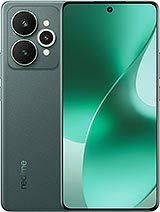Oppo K13x alternatives
Tap above to see alternatives.
Poco F6 alternatives
Tap above to see alternatives.
2x2.4 GHz Cortex-A76
6x2.0 GHz Cortex-A55
1x3.0 GHz Cortex-X4
4x2.8 GHz Cortex-A720
3x2.0 GHz Cortex-A520
6GB 128GB (UFS 2.2)
8GB 256GB (UFS 2.2)
12GB 512GB (UFS 4.0)
OmniVision OV50D, f/1.8, (wide), PDAF
2 MP,
f/2.4, (Mono)
(f/1.6, (wide), 1/1.95", 0.8µm, multi-directional PDAF, OIS)
8 MP
((ultrawide), 1/4.0", 1.12µm)
1080p@30/60/120/240fps
GalaxyCore GC08A8, f/2.0, (wide)
f/2.2, (wide), 0.8µm
SIM1: Nano, SIM2: Nano (Hybrid)
SIM1: Nano, SIM2: Nano
9 5G bands
n1, n3, n5, n8, n28, n40, n41, n77, n78
14 5G bands
n1, n3, n5, n7, n8, n20, n28, n38, n40, n41, n48, n66, n77, n78
In this performance comparison, the Poco F6 with its Qualcomm Snapdragon 8s Gen 3 (4nm) performs better than the Oppo K13x with the Mediatek Dimensity 6300 (6nm), thanks to superior chipset efficiency.
Poco F6 offers 3 years of OS updates, whereas Oppo K13x provides 2 years. For security updates, Poco F6 offers 4 years of support compared to Oppo K13x's 3 years.
Poco F6 features a superior AMOLED display, while Oppo K13x comes with an LCD panel. Both smartphones offer the same 120 Hz refresh rate. Poco F6 also boasts a brighter screen with 2400 nits of peak brightness, enhancing outdoor visibility. Notably, Poco F6 offers a higher screen resolution, resulting in sharper visuals and more detailed content.
Oppo K13x comes with a larger 6000 mAh battery, which may offer longer usage on a single charge. Poco F6 also supports faster wired charging at 90W, compared to 45W on Oppo K13x.
Oppo K13x offers better protection against water and dust with an IP65 rating.
¹ Scores can vary even with the same chipset due to RAM, thermals, and software optimization.












